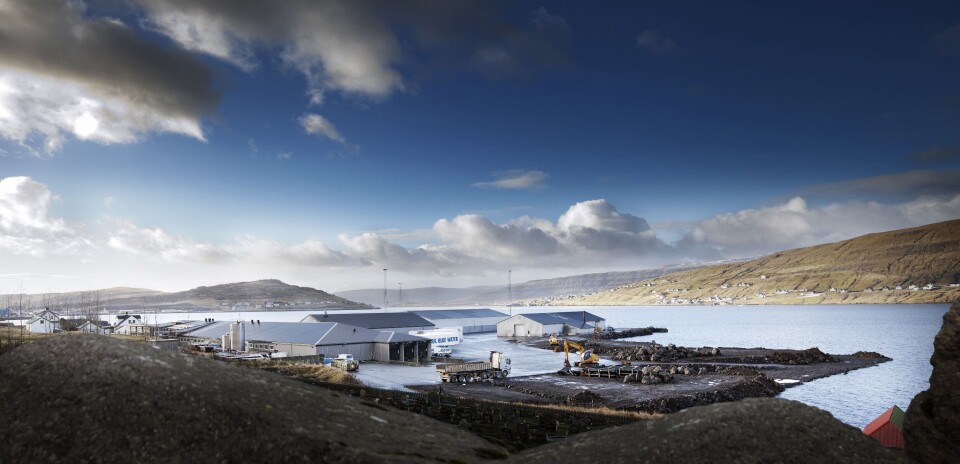
Faorese still lead the field
Bakkafrost’s farming segment remains one of the world’s best performers, achieving an operational EBIT corresponding to NOK 34.47 (£3.19) per kilo during the second quarter of the year.
On the flip side the VAP segment made an EBIT loss of DKK 68.4 million, due to high spot prices.
Commenting on the result, CEO Regin Jacobsen said: "We are very satisfied with the result for Q2 2016. The salmon spot price has been record high in the quarter and the biological performance has been good. The VAP segment has struggled, but we maintain our strategy to sell a share of our production as value added products. The development in our fishmeal, fish oil and fish feed segment in the quarter was also good. The 5-year investment plan was updated in June on our Capital Market Day, and the hatchery in Viðareiði is starting production at the moment, the new Harvest plant has started operation, and the construction of the new hatchery in Strond has commenced."
The Bakkafrost Group delivered a total operating EBIT of DKK 307.1 million for Q2 2016. Harvested volumes were 13,000 tonnes gutted weight. 1.9 million smolts were transferred and Havsbrún sourced 84,000 thousand tonnes of raw material.
On 14 July 2016, Bakkafrost announced suspicion of pathogenic ISA virus in the farming site A-73 Hvannasund Norður based on regular ISA test results, carried out by the Veterinary Authorities. Consequently, Bakkafrost prepared to take necessary actions, and the Veterinary Authority undertook further tests in order to confirm the suspicion of pathogenic ISA virus. After a week of extensive testing, all the results were negative and did not prove the presence of pathogenic ISA virus.
After that, the Veterinary Authority increased surveillance at the farming site A-73 Hvannasund Norður and carried out extra tests on neighbouring farming sites, which will be carried out for the next half year. This procedure is stipulated in the Faroese veterinary farming regime with the purpose of securing and maintaining good biology in the Faroese farming industry.
Farming outlook
Bakkafrost has acquired the remaining outstanding shares in P/F Faroe Farming, which holds three farming licenses in Suðuroy and harvested 4,681 tonnes gutted weight in 2015. Harvested volumes for H1 2016 were 2,054 tonnes gutted weight, while it expects to harvest 1,000 tonnes gutted weight in the second half of 2016, thus making the projected total harvest of the Bakkafrost Group at 49,000 tonnes this year. Simultaneously, Bakkafrost relinquished two farming licenses to the Faroese Authorities. Following these two transactions, Bakkafrost has 14 licenses for farming salmon.
Bakkafrost forecasts a release of 10.4 million smolts in 2016, compared with 11.3 million in 2015 and 10.4 million in 2014.
The biological situation is Bakkafrost's most important risk area, as was reflected by the suspicion of possible pathogenic ISA last month. The company is focusing on the biological risk continuously and has made several new investments and procedures to diminish this risk.
VAP
Bakkafrost has signed contracts covering around 79% of the VAP capacity for the rest of 2016. This corresponds to around 39% of the expected harvested volumes for the rest of 2016. The remaining 21% are expected to be committed during the period. Bakkafrost has already signed contracts covering approximately 50% of the VAP capacity for 2017. In connection with the negotiation and signing of the new contracts for 2017, Bakkafrost has renegotiated the prices for part of the remaining quantities from the end of Q3 2016 in line with the forward price picture.
Fishmeal, -oil and feed (FOF)
The quotas for catching blue whiting in the North Atlantic are expected to be reduced, and therefore the production of fishmeal and fish oil are most likely to reduce in volume in 2016 from relatively high volumes in 2015. Havsbrún's sales of fish feed in 2016 are expected to be at 80,000 tonnes.
Investments
In June Bakkafrost announced a DKK 2.2 billion five-year investment plan, in a bid to continue to have one of the most cost conscious value chains in the farming industry, carry out organic growth, increase flexibility and reduce the biological risk to meet future consumer trends and to be more end-customer-orientated.
Bakkafrost has a goal to be self-supplied with smolts at a size of 500g each to reduce production time at sea. To reach this goal, approximately half of Bakkafrost's total investments over the next five years will be in hatcheries.
The investment of the new harvest/VAP factory will be finalised in 2016. The harvest operation has started and the VAP operation is expected to start in Q4 2016. There will be some extra costs during the start-up period, but the investment is expected to result in operational savings of DKK 70-90 million per year with gradual effect from 2017.
The company plans to increase the value of offcuts from salmon harvested and processed in the new harvest/VAP factory and will invest in a new salmon -meal and salmon-oil plant, located in Fuglafjørður and operated by Havsbrún. The FOF segment will also invest in a new feed line, which will increase the capacity of the feed production.




















































